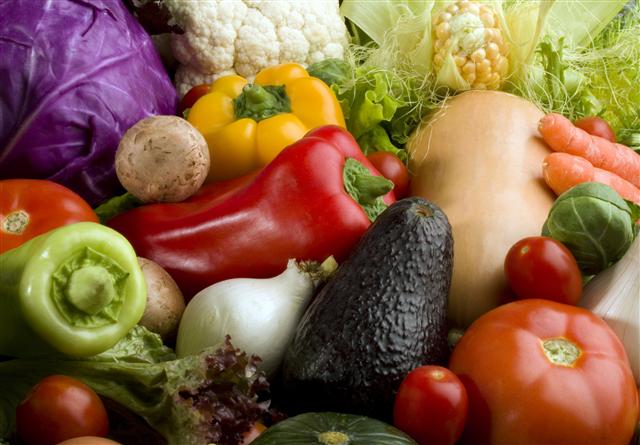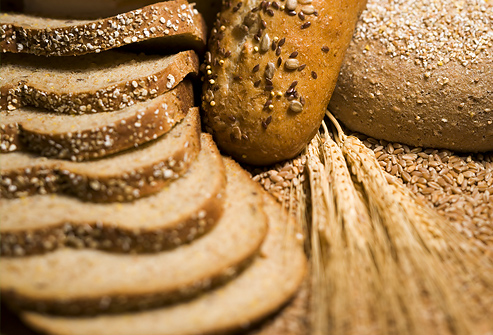 As we discussed in Part 1 of this series, we introduced rice cereal to our baby daughter at six months. Within a week, she started to get sick whenever she ingested it. After initially thinking her illness was caused by some spoiled milk, a dirty bottle, or possibly a virus, we pretty quickly identified the rice cereal as the apparent root cause.
As we discussed in Part 1 of this series, we introduced rice cereal to our baby daughter at six months. Within a week, she started to get sick whenever she ingested it. After initially thinking her illness was caused by some spoiled milk, a dirty bottle, or possibly a virus, we pretty quickly identified the rice cereal as the apparent root cause.
Upon our return to Phoenix from our Santa Fe vacation, we once again consulted with our primary pediatrician. Her feedback was that rice is typically considered the most neutral, hypoallergenic cereal available for babies…especially since it is gluten-free. However, since rice cereal seemed to be the culprit, she advised us to give oat cereal a try instead to see if our daughter would do better with that. We tried that the next day, and again experienced the same excruciating result. Our daughter gobbled up the oat cereal paste, and then about three hours later proceeded to vomit for about three hours. At that point, we knew for sure that something definitely was not right.
We consulted again with our pediatrician. Her latest advice was to just avoid grains all together for a while. Both my wife and I quickly agreed, having already arrived at this obvious conclusion prior to our visit. However, now we were even more perplexed and curious as to what was going on inside our beautiful daughter. Was this “condition” she was experiencing something temporary? Was it being caused by something more serious? Was this something she (we) was going to have to deal with for the rest of her life? These were all questions that were hanging out there, and we needed some answers. Now what?
After some further discussion with our pediatrician, and even though rice cereal is gluten-free, we agreed to do a blood test for celiac disease. According to Mayo Clinic, celiac disease is a digestive condition triggered by consumption of the protein gluten, which is primarily found in bread, pasta, cookies, pizza crust and many other foods containing wheat, barley or rye. People with celiac disease who eat foods containing gluten experience an immune reaction in their small intestines, causing damage to the inner surface of the small intestine and an inability to absorb certain nutrients. Unfortunately, there is no cure for celiac disease and people with the disease are forced to manage their lifestyle and dietary consumption throughout their lifetime. Fortunately, celiac disease and other gluten-related digestive conditions have led to the fairly wide availability of a variety of gluten-free lines of food products and ingredients.
After waiting for about a week or so, our pediatrician informed us that the test for celiac disease had come back negative. This did not completely rule that out, due to our daughter’s young age, but it did reduce the likelihood that celiac was the culprit. Okay…now what? Once again, we consulted with our pediatrician to discuss other possible causes or conditions. Food allergies were considered to be the other most likely cause of our daughter’s grain issues. Childhood allergies have received much press in recent years, as studies have shown possible connections between food allergies and a pretty wide range of common childhood illness, from ear infections to general irritability and colic to ADHD. In many cases, children outgrow these allergies by 3 to 5 years of age, and the best way to deal with them is to just avoid the foods causing the problems. Rather than go through a full battery of allergy tests at such a young age (~8 mths old), we decided to just avoid grains for a while and focus on introducing other foods that would satisfy her nutritional needs for the foreseeable future. This would certainly pose some challenges when mealtime rolled around each day…and especially when it came to snacks (no Cheerios, crackers, bread, cookies, cake, etc.)…but it was certainly something we felt we could manage…for now.
Fast forward eight months. Our daughter is now almost 16 months old and we have learned to manage her dietary restrictions quite well by closely monitoring product ingredients and watching carefully for crumbs on our floors. A few weeks ago, we decided to investigate some more to try to find other possible causes of the grain intolerance/allergy/reaction with which we are dealing. After going in a few different directions with our research, we stumbled onto something called FPIES. FPIES is short for Food Protein-Induced Enterocolitis Syndrome. FPIES is a severe, cell-mediated gastrointestinal food hypersensitivity typically provoked by cow’s milk, soy, grains, poultry, and/or some vegetables. It is commonly characterized by profuse vomiting and diarrhea. As I read through descriptions of the condition and read through details of how FPIES has affected other young children and babies, I started to get goosebumps as I realized that we had finally found some of the answers we were looking for. We visited an allergy clinic this week and confirmed our FPIES suspicions with the doctor, who was familiar with the condition and was in agreement with our discovery.
Check back soon for more details on FPIES, and also for more information on the foods and snacks that have helped us to manage our daughter’s dietary restrictions and keep her healthy.
If you have any questions about how we are dealing with FPIES, please let us know…and please join in the conversation on our website, on Twitter, and on Facebook to share your stories of dealing with childhood food restrictions.


